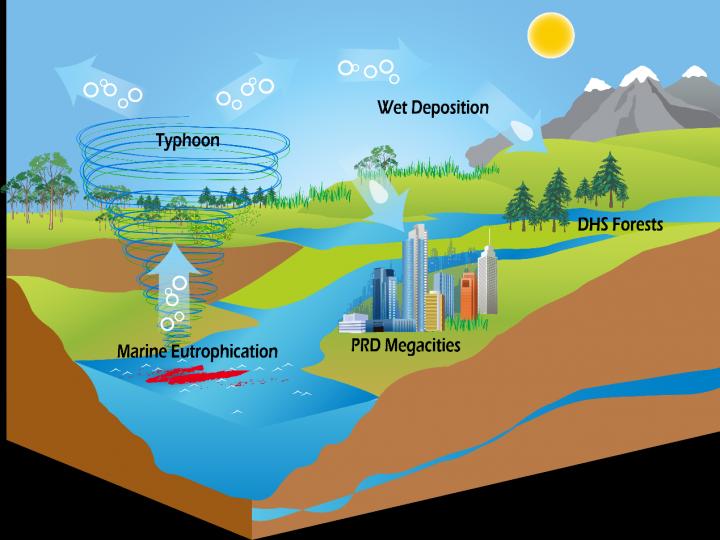Typhoons and marine eutrophication are probably the missing source of organic nitrogen in ecosystems

Typhoons and marine eutrophication are probably the missing source of organic nitrogen in ecosystems Credit: Ming Chang
In recent years, with the reduction of anthropogenic inorganic nitrogen emissions, interest in organic nitrogen (ON) has increased because it represents a large fraction of total nitrogen.
Given this large amount of ON deposition, researchers are interested in identifying its sources. However?scientists find large gaps between ON deposition and emission?and therefore suspect that there are missing sources of ON.
In a paper recently published in Atmospheric and Oceanic Science Letters, Dr. Ming Chang from the Institute for Environmental and Climate Research, Jinan University, and his coauthors, try to address this concern based on their recently completed preliminary work on the deposition-emission relationship.
“We classified observed flux data of dissolved ON in terms of the attributes of the wet deposition event itself, such as the season, precipitation, air mass backward trajectory, and effect of typhoons. The reverse trajectories of each air mass responsible for high ON flux precipitation events were tracked and superimposed with chlorophyll-a concentration maps in the ocean,” says Dr. Chang.
According to this study, approximately one third of the total wet deposition of ON was found to be derived from a confluence of three factors: rain in the wet season, air masses from the ocean, and rainfall over 50 mm.
It was also found that the co-occurrence of intense events, such as a typhoons and eutrophic surface sea waters, might be an important source of dissolved ON in wet deposition.
“However, further quantitative and targeted research is needed to confirm the validity of these possibilities,” adds Dr. Chang.
Media Contact
More Information:
http://dx.doi.org/10.1080/16742834.2019.1679016All latest news from the category: Ecology, The Environment and Conservation
This complex theme deals primarily with interactions between organisms and the environmental factors that impact them, but to a greater extent between individual inanimate environmental factors.
innovations-report offers informative reports and articles on topics such as climate protection, landscape conservation, ecological systems, wildlife and nature parks and ecosystem efficiency and balance.
Newest articles

Solving the riddle of the sphingolipids in coronary artery disease
Weill Cornell Medicine investigators have uncovered a way to unleash in blood vessels the protective effects of a type of fat-related molecule known as a sphingolipid, suggesting a promising new…

Rocks with the oldest evidence yet of Earth’s magnetic field
The 3.7 billion-year-old rocks may extend the magnetic field’s age by 200 million years. Geologists at MIT and Oxford University have uncovered ancient rocks in Greenland that bear the oldest…

Decisive breakthrough for battery production
Storing and utilising energy with innovative sulphur-based cathodes. HU research team develops foundations for sustainable battery technology Electric vehicles and portable electronic devices such as laptops and mobile phones are…





















